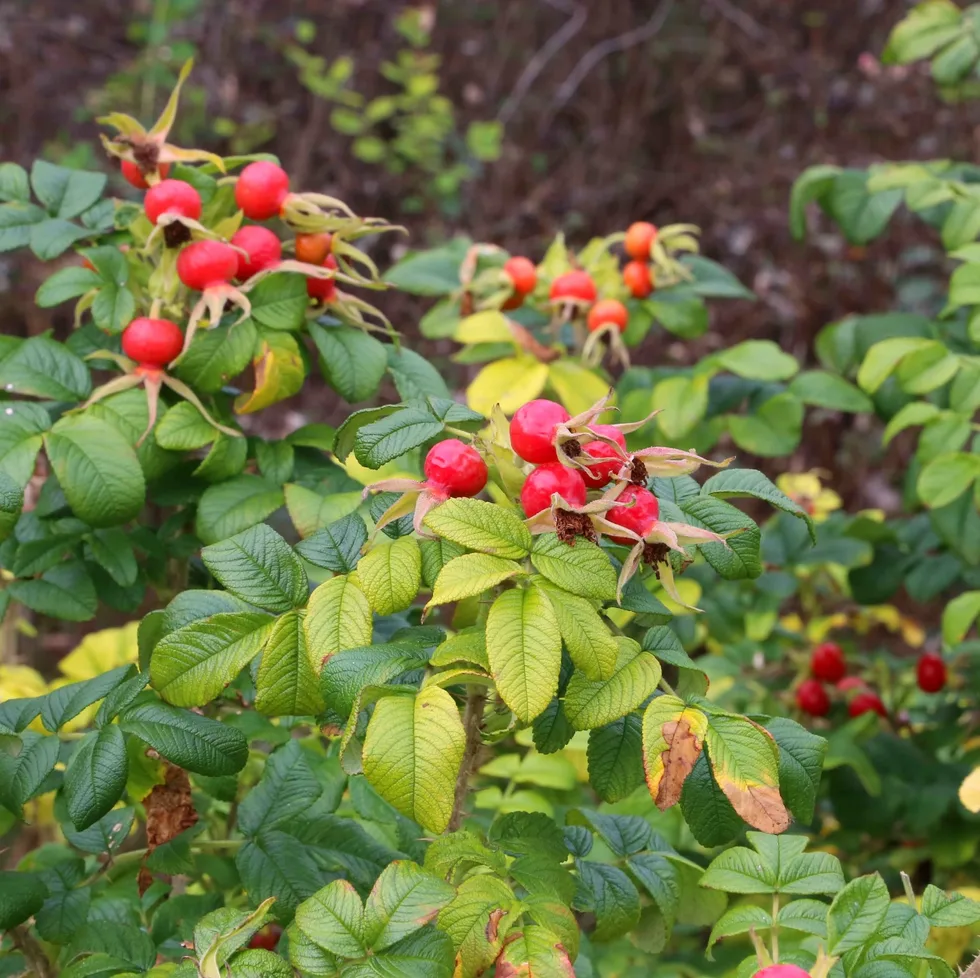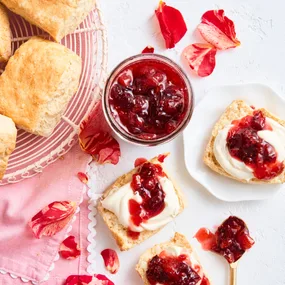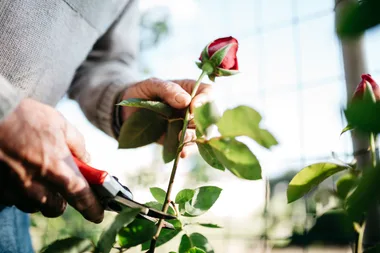Autumn is harvest time – apples, pears, pumpkins, beetroot and, of course, roses. With their intoxicating perfume and softly folding, velvet-like petals, roses are the gift of summer that keeps on giving.
When a rose fades, you snip it off to generate more romantic blooms. However, if you don’t snip off those spent blooms, you’ll have an autumn and winter garden decked out in different jewels, with gleaming red or orange rose hips you can take straight to the kitchen!
How to grow rose hips
Follow all the normal steps to growing roses, and then wait until the end of the blooming season to get your rose hips started!
Step 1
Set your roses up for hip success by enticing pollinators such as bees to your garden. If the roses aren’t pollinated, they won’t produce the seed-holding hips. Attract pollinators by putting in plants high in nectar such as lavender and salvia.
Step 2
Stop pruning fading rose blooms from March to April and allow blooms to fall off naturally. Where once there were blooms, you’ll see small green hips developing. They’ll mature to the size of a grape, then take on rich red or orange hues. The best hips are produced in autumn and early winter.
Step 3
To harvest, cut the stem just below the base of the hip, when they’re ripe, colourful and still firm to touch.
To make rosehip tea, wash 10–12 hips (discard stems) and pop in a teapot. Fill with boiling water and leave for 10 minutes before straining into a cup.
Note: Don’t use hips that have been sprayed with chemicals in any food or drinks.
Make a simple rosehip tea
How to make rosehip jam

Ingredients
Method
To sterilise jars, place on a rack in a large pot of boiling water and boil for 10 minutes, or wash, rinse and place in a 120°C oven for 10 minutes. To sterilise the lids, bring 500ml of water to the boil, place the lids in a shallow bowl, and pour the boiling water over them.
Rinse the hips thoroughly. Trim off any rough ends and discard. Place the cleaned rose hips in a large pot, add the water, and bring to a boil. Reduce the heat and simmer on low, covered, for about 1 hour or until the rose hips are soft enough to mash.
Mash the hips using a potato masher to create a rough purée.
Line a fine strainer with muslin cloth and place over a large pan (see Cook’s Tip). Pour the mashed hips into the strainer and allow the liquid to drain for at least an hour. Press with a masher to extract more juice. You will need 750ml of juice for this recipe – top up with water if necessary.
Pour 750ml of rosehip juice into a large pot. Add lemon juice and pectin, stirring until dissolved. Bring to the boil on high heat.
Stir in the sugar. Once fully dissolved, add the butter. Bring the mixture to a rolling boil (it will bubble up considerably). Boil for exactly 1 minute, then remove from the heat.
Pour hot jam into the prepared sterilised jars, leaving a 5mm space from the rim. If any jam spills on the rim, wipe the rim clean with a damp cloth. Place the sterilised lids on the jars and screw the rings on securely.
Set aside in a cool dry place for 1–2 days to allow to set (the jam can take up to 1–2 days to set).
Cook’s tip
You’ll need to use a muslin cloth to ensure all the fine hairs from the hips are strained out. A standard sieve isn’t fine enough to catch these fine hairs, and they’ll irritate your digestive system if eaten.
Can you eat rose hips raw?
You can eat rose hips raw, but be wary of the hair inside the fruit, as it can irritate the throat and digestive system. When eaten straight off the branch, they have a floral flavour that is slightly tart.



